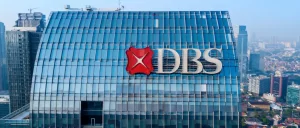In Singapore, the property market remains one of the most robust investment avenues. Over the years, real estate investments in the City State have consistently yielded impressive capital appreciation. But what factors underpin this impressive growth? Let’s deep dive into the aspects that drive capital appreciation in Singapore’s property market.
1. Strategic Location & Connectivity
Geographical Advantage
Geographical advantages play a pivotal role in determining property prices. A prime location that offers scenic beauty, accessibility, and convenience can significantly enhance the desirability of a property, leading to higher demand and, consequently, higher prices. For instance, properties with ocean views, proximity to urban centers, or in neighborhoods with excellent schools and low crime rates often command premium prices.
Infrastructure & Connectivity
Well-developed transport systems such as the MRT, bus interchanges, and road networks ensure properties in well-connected areas see higher appreciation rates.
One good example is the properties around the newly built Thomson-East Coast Line have been attracting attention due to increased connectivity, causing the property price to speculate.
2. Supply & Demand Dynamics
Singapore’s compact size naturally restricts its real estate supply. With limited land and a growing population, property prices are, more often than not, on an upward trajectory.
Land Scarcity
As the population grows and urbanization intensifies, the finite nature of land in Singapore becomes even more pronounced. This makes every parcel of land immensely valuable.
The Central Area of Singapore is a good example of maximising land value. Due to the demand for property in Central Area of Singapore that is closer to Central Business District, and the lack of land, drives the property prices up.
Changing Lifestyle Preferences
The preference of the newer and younger generation of Singapore will affect the demand of properties. This can be due to the experience, convenience and amenities it provides.
The development of Funan Mall, which integrates retail, office, and co-living spaces, is a response to the changing preferences of the urban population.
Global Economic Landscape
Economic downturns, geopolitical tensions, and even global health crises can influence foreign investments in Singapore, which in turn can impact demand and supply dynamics.
COVID-19 pandemic led to a slowdown in supply of properties in Singapore due to the workforce restrictions. This has caused the supply to mismatch the demand leading to price increased during this period.
3. Socio-Economic Factors and Demographics
Singapore’s rapid economic growth has catapulted many of its citizens into the middle and upper-middle-class strata. This new-found affluence influences their housing choices. On one end of the spectrum, there’s a desire for luxury and exclusivity; on the other, there’s a demand for modern, well-located, but affordable housing. Moreover, changing family structures, such as the rise in single-person households or dual-income families without kids, also shape housing needs and preferences.
Demographic Trend
Ageing population has necessitated new types of residential solutions, such as retirement villages or assisted living facilities. Conversely, a younger, more globally connected generation, influenced by global trends and international travel, craves modern, cosmopolitan living spaces that cater to their dynamic lifestyles.
The development of Tiong Bahru presents a fascinating case study. What was once an old estate populated by traditional shop houses and an older demographic has, over the years, transformed into a bustling, hip neighbourhood. Modern cafes, artisanal shops, and renovated walk-up apartments now coexist with traditional businesses, drawing both the young and the old. This rejuvenation, driven by socio-economic shifts and a younger, more affluent demographic, showcases how property demand can evolve in response to societal changes.
4. Infrastructure and Amenities Development
Infrastructure refers to fundamental facilities and systems, like transportation (roads, MRT stations, bus hubs), utilities (electricity, water supply), and public institutions (schools, hospitals). On the other hand, amenities typically refer to value-added features or services in a locality, like shopping malls, parks, gyms, or entertainment hubs. Their presence, quality, and accessibility play a crucial role in influencing a person’s decision to buy or rent a property in a particular area. It’s not just about having infrastructure and amenities, but their strategic planning and integration that can elevate a locality from being just ‘good’ to ‘highly sought-after.’
Of course, there are other popular amenities in Singapore such as popular Primary School within the 1km distance of the property.
A prime instance of how infrastructure can transform a region is the Bidadari estate. Previously a cemetery, the government’s decision to redevelop it into a new town has led to a surge in demand for properties there. A significant driver for this demand is the planned Bidadari Park, spanning 10 hectares with a lake, coupled with the convenience of the new underground bus interchange and the proximity to Woodleigh MRT station. Additionally, amenities like the new Woodleigh Mall and Alkaff Lake make it an attractive locale for families and individuals alike. The foresight in integrating both natural green spaces with essential transportation hubs and commercial outlets is a testament to how infrastructure and amenities can rejuvenate an entire area.
5. Changing Lifestyle Preferences
If you take a look around our little red dot these days, you’ll notice that Singaporeans are no longer just chasing the 5Cs. Our wants and needs for property have evolved, as our city-state transforms.
Take the Tengah “Forest Town” for instance. This isn’t just your typical new town. This is Singapore’s very own “smart and sustainable” HDB estate. Right in the heartland, Tengah brings together the best of tech and nature. From car-free zones to community farming plots, it’s like a kampung upgraded for the 21st century. It’s this kind of forward-thinking development that shows how we, as Singaporeans, are redefining what home feels like in response to the changing times.
These days, younger generations of Singaporeans, especially the millennials and Gen-Z, want more than just a standard HDB flat or a posh condo. They’re looking for a blend of old and new: a place that speaks of both their Singaporean roots and their modern aspirations. We now want homes that are smart, sustainable, and offer work-life balance, reflecting the blend of tradition and innovation that defines Singapore.
With the rise of work-from-home (or as we often joke, “work from bed”), many are seeking homes that have that extra space to double up as a home office. And with our country’s push towards sustainability, eco-friendly features in a property aren’t just ‘nice-to-have’ but are becoming a ‘must-have’. Features like energy-saving aircons, rainwater harvesting systems, and green communal spaces are the talk of the town.
6. The Global Economic Landscape
As one of the world’s leading financial centers, Singapore attracts a plethora of multinational corporations, investors, and high-net-worth individuals. This influx brings with it capital, talent, and a heightened demand for premium real estate. However, it also means that the city-state’s property market is susceptible to global economic winds. Factors such as international trade wars, shifts in global monetary policies, geopolitical tensions, and worldwide economic downturns can impact the confidence and investment appetite of both local and foreign buyers.
The 2008 Global Financial Crisis serves as a telling case study. Originating in the U.S. with the subprime mortgage crisis, this financial tsunami quickly spread globally. In Singapore, the private residential property price index declined by nearly 25% within a year. However, robust government policies, strong financial fundamentals, and strategic foreign investments allowed the nation to bounce back, showcasing both the vulnerabilities and resilience of Singapore’s property landscape in the face of global adversities.
7. Risks and Setbacks in Asset Progression
As investors chart their property asset progression, they can sometimes overlook potential pitfalls. Whether these are macroeconomic changes, policy shifts, or personal financial missteps, these risks can derail an investor’s strategy and result in substantial losses.
Back to 2008 Global Financial Crisis. Many investors in Singapore had bought properties at peak prices, expecting the market to continue its upward trajectory. However, the sudden downturn led to a sharp drop in property values. Those who needed to offload their properties urgently found themselves in negative equity, where the value of the property was less than the outstanding mortgage. This highlighted the importance of understanding market cycles, having a buffer in place, and not overleveraging oneself.




